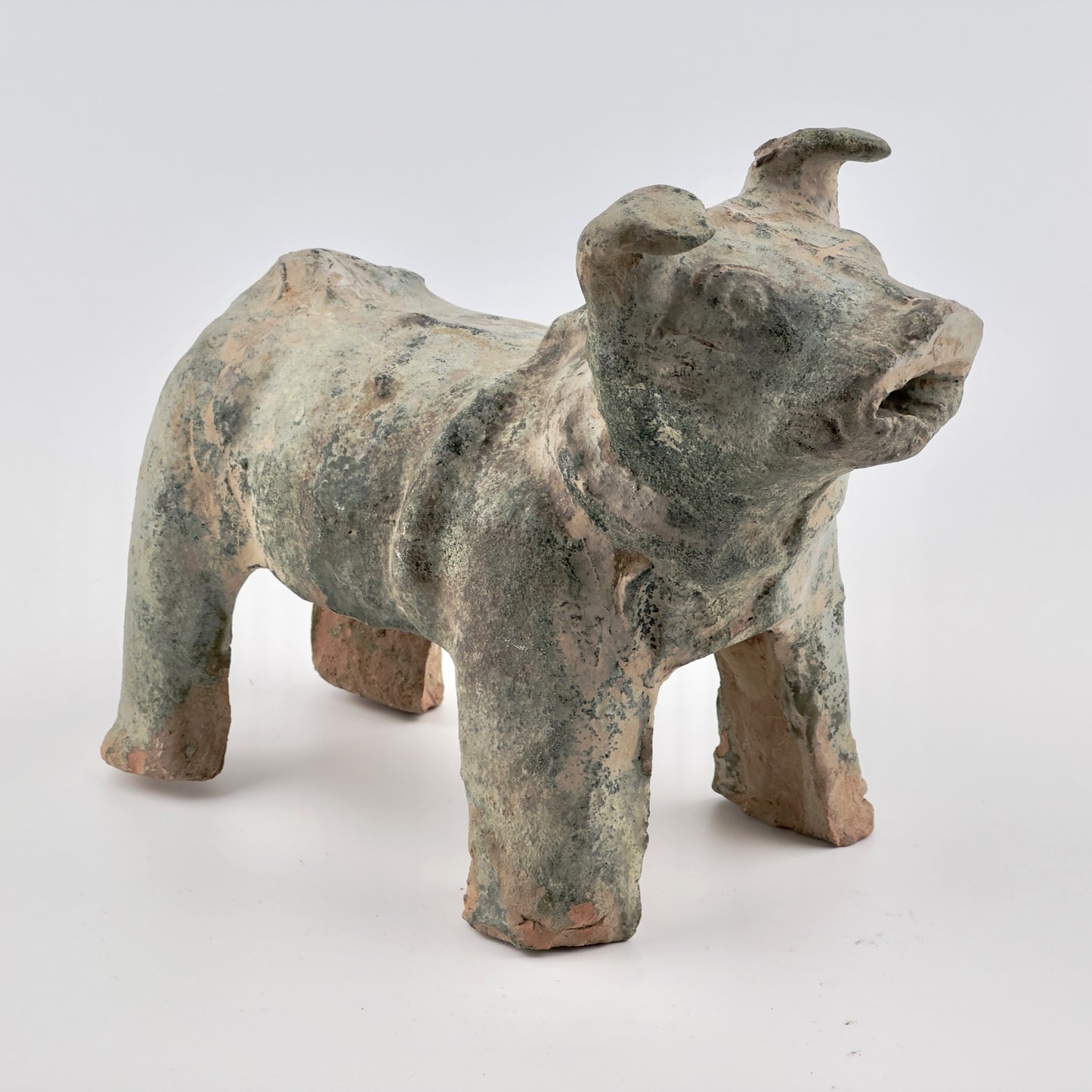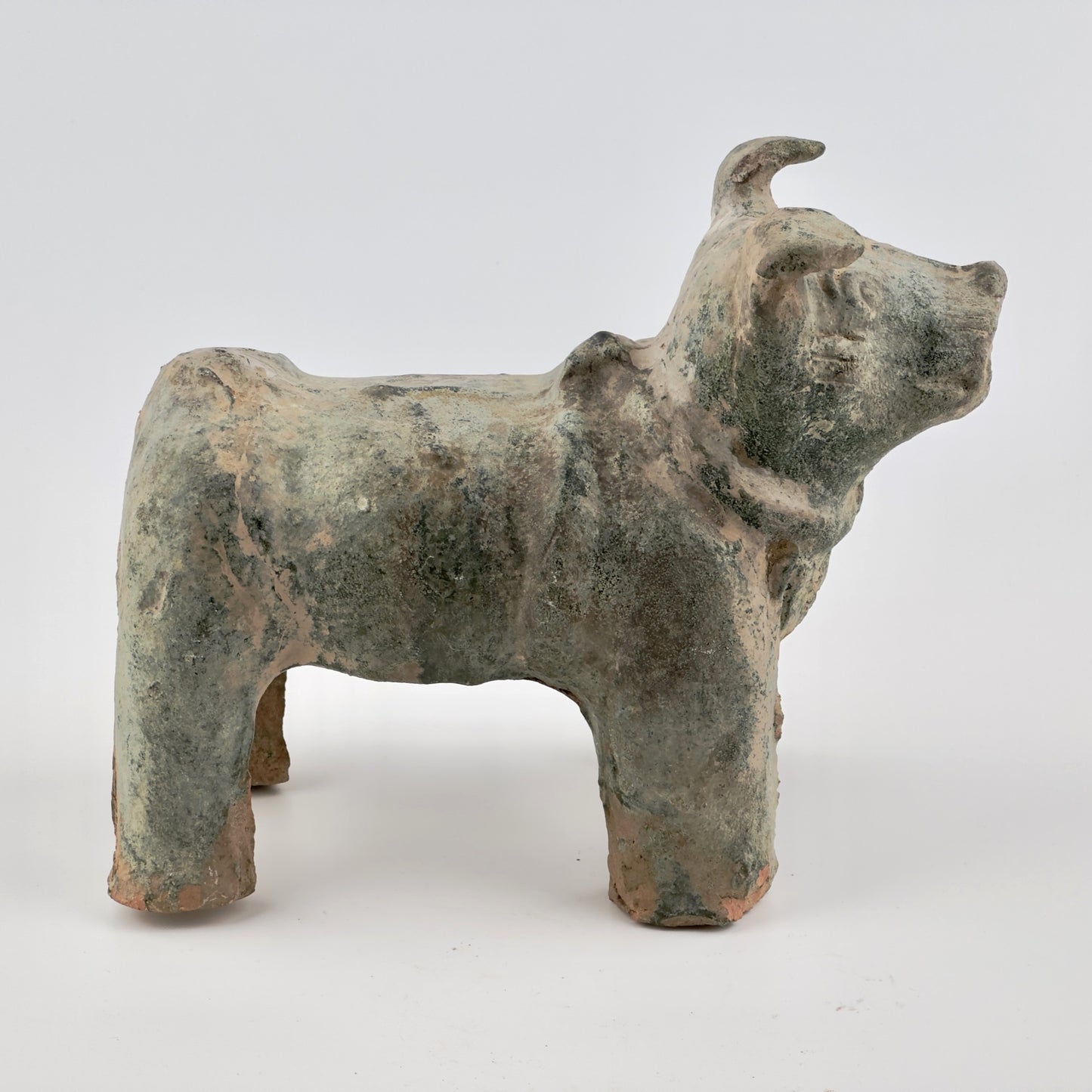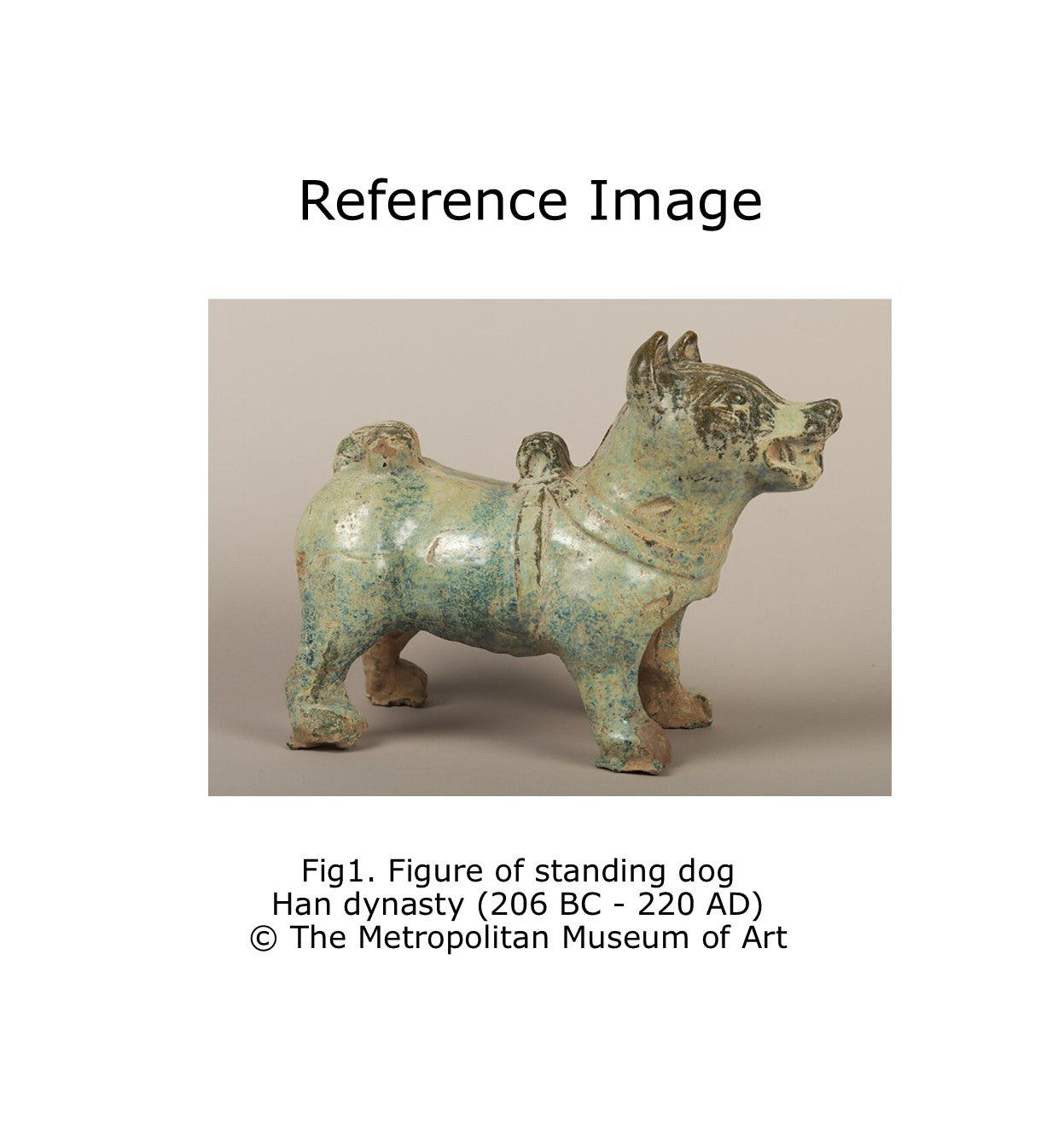Green Glazed Red Pottery Figure of Dog, Han dynasty (206 BC-220 AD)
Green Glazed Red Pottery Figure of Dog, Han dynasty (206 BC-220 AD)
Couldn't load pickup availability
The dog faces forward, with clearly defined eyes that stand out. Its ears are slightly curled, giving the impression of a relaxed, natural stance. The collar around its neck, connected to a harness, suggests that the dog may have been used for hunting or guarding.
The muscular legs support a strong body, and the tail curls over its back. The surface has developed a silver iridescence from burial.
Period : Han Dynasty (206 BC - 220 AD)
Type : Animal statue
Medium : Green glazed pottery
Dimension : 20cm(Height) x 24cm(Diameter)
Provenance : The piece was acquired in Hong Kong in late 1990s.
Condition : Good (Minor repair on the left hind leg's thigh)
Reference :
1) Havard Museum - Object Number 40.1965
(Type : Closely related)
https://harvardartmuseums.org/collections/object/211758
2) Tokyo National Museum - Museum Number TG-2895
(Type : Closely related)
https://colbase.nich.go.jp/collection_items/tnm/TG-2895?locale=ko
3) The MET - Accession Number: 1994.605.18 - Figure of a Standing Dog
(Type : Closely related)
https://www.metmuseum.org/art/collection/search/44319
* Han Dynasty Pottery
Han Dynasty pottery, originating from one of China's most significant historical periods (202 BCE – 220 CE), is renowned for its technological and artistic achievements in ceramic production. These artifacts typically feature a distinctive green glaze, although other colors were also used. The pottery often includes intricate decorative motifs, such as animals, mythological figures, and geometric patterns.
The craftsmanship during the Han Dynasty was advanced, with pottery techniques that were innovative for the time. These pieces were not only utilitarian but also held ceremonial and symbolic significance. The shapes and designs of Han Dynasty pottery vary, including items like urns, vases, and figures, reflecting both the daily life and the spiritual beliefs of the period


































